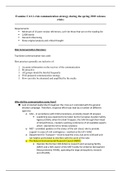Essay
Was the CAA's response to Eyjafjallajokull justified or not?
- Institution
- Kings College London (KCL)
In the wake of one of the biggest aviation disruptions in history across the European Union, the CAA led the investigation and response into how they best responded
[Show more]



